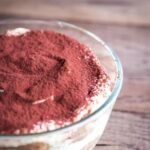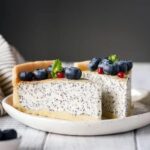Thawing a frozen decorated cake is essential to preserve its flavor and appearance. Freezing a cake not only allows you to prepare in advance for special occasions, but it also helps lock in moisture and prevent staleness. However, thawing a decorated cake requires proper techniques to ensure that the delicate decorations remain intact and the taste remains as delicious as ever.
In this article, we will guide you through the process of thawing a frozen decorated cake step by step. We will explore why freezing a cake is beneficial, how to properly wrap and store it for freezing, as well as understanding the importance of timing for optimal results. Additionally, we will discuss different thawing methods and their pros and cons.
Thawing a frozen decorated cake may seem like a daunting task, but with the right knowledge and techniques, it can be easily accomplished. Whether you prefer using the refrigerator method or need quick thawing tips when short on time, we’ve got you covered. Furthermore, we will provide insights on preventing any damage to the delicate decoration during the thawing process and ensuring that your cake tastes just as amazing after being frozen.
So, if you’re curious about how to safely thaw a frozen decorated cake without compromising its taste or appearance, keep reading. We’ll provide you with all the information and tips you need to successfully bring your frozen masterpiece back to life.
The best way to prepare your cake for freezing
To ensure that your decorated cake freezes well and maintains its shape and taste upon thawing, it is important to properly prepare it before placing it in the freezer. Follow these steps to prepare your cake for freezing:
- Allow the cake to cool completely: Before freezing your cake, make sure that it has cooled down completely. This will prevent condensation from forming inside the packaging, which can lead to a soggy cake.
- Level and trim the cake: Use a sharp knife or a cake leveler to even out the top of the cake and remove any domes or uneven edges. This will not only make the cake more visually appealing but also help it freeze uniformly.
- Crumb coat the cake: Applying a thin layer of buttercream frosting as a crumb coat will help seal in any loose crumbs and provide added protection during freezing. Spread a thin layer of frosting over the entire surface of the cake using an offset spatula.
- Freeze the cake uncovered: Place the crumb-coated cake on a sturdy cardboard or freeze-proof plate/tray and place it in the freezer, uncovered, for about 1-2 hours or until it is firm to touch. This initial freezing will prevent the decoration from smudging or getting damaged when wrapped later on.
Remember, if you are working with multiple tiers or layers, it is best to freeze them individually before assembling them together later. This will make handling and thawing easier while minimizing any chances of damage.
Follow these guidelines when preparing your cake for freezing, and you can be confident that your beautifully decorated creation will retain its quality throughout the freezing and thawing process.
| Steps | Description |
|---|---|
| 1 | Allow the cake to cool completely |
| 2 | Level and trim the cake |
| 3 | Crumb coat the cake |
| 4 | Freeze the cake uncovered for 1-2 hours or until firm to touch |
Step-by-step guide on proper wrapping and storage of the cake
Proper wrapping and storage are key to preserving the quality and integrity of a decorated cake while it is frozen. Follow these step-by-step instructions to ensure your cake stays fresh and protected during the freezing process:
- Allow the cake to fully cool: Before wrapping and storing the cake, make sure it has completely cooled down. This will prevent moisture from getting trapped inside the packaging, which can lead to a soggy or mushy cake.
- Choose the right materials: Use high-quality materials specifically designed for food storage. This includes plastic wrap or aluminum foil, as well as a sturdy freezer bag or an airtight container. These options will provide an extra layer of protection against freezer burn and keep unwanted odors from seeping into the cake.
- Wrap the cake tightly: Start by covering the entire cake with a layer of plastic wrap or aluminum foil. Ensure that there are no gaps or exposed areas, as this can lead to freezer burn. Next, place the wrapped cake in a freezer bag or container, making sure it is sealed tightly.
- Label and date: It’s important to label your wrapped cake with its contents and date of freezing. This will help you keep track of how long it has been in the freezer and when it needs to be thawed by.
- Store in the coldest part of the freezer: To retain flavor and freshness, place the wrapped cake in the coldest part of your freezer, ideally towards the back where temperatures are more consistent.
By following these steps, you’ll ensure that your decorated cake remains intact and stays fresh until you’re ready to thaw and enjoy it. Proper wrapping and storage also eliminate any risk of contamination from other foods in your freezer.
Understanding the importance of timing
One of the crucial factors to consider when freezing a decorated cake is understanding the importance of timing. Freezing a cake can preserve its freshness, moistness, and flavors, but it’s important not to exceed the recommended time limit for freezing. The length of time you can freeze a decorated cake depends on various factors such as the type of cake, its ingredients, and the decorations used.
Generally, most decorated cakes can be frozen for up to three months without significant loss in quality. However, it’s important to note that certain types of cakes may have different freezer limits. For example, buttercream-frosted cakes are more sensitive to freezing and may only last for about a month in the freezer.
To ensure you don’t exceed the recommended freezing time for your specific cake, it’s helpful to label your cake with the date it was frozen. This way, you can easily keep track of how long it has been in the freezer.
If you’re unsure about how long a particular type of cake can be frozen, consult the recipe or ask the baker or pastry chef who made the cake. They will be able to provide specific guidance based on their expertise and knowledge of the ingredients used.
When it comes to freezing a decorated cake, timing is crucial in maintaining its overall quality. By adhering to the recommended freezer limits and properly labeling your cake, you can ensure that it remains delicious and visually appealing after thawing.
Thawing methods
When it comes to thawing a frozen decorated cake, there are several methods you can use. Each method has its pros and cons, so it’s important to choose the one that works best for your specific situation.
One common method is thawing the cake at room temperature. This involves simply taking the frozen cake out of the freezer and letting it sit at room temperature until it thaws completely. The advantage of this method is that it requires no special equipment or extra steps. However, one drawback is that it can take a significant amount of time for the cake to thaw fully, especially if it’s a large cake.
Another popular thawing method is using the refrigerator. To thaw a frozen decorated cake in the refrigerator, place the wrapped cake on a plate or tray and let it sit in the fridge overnight or for several hours until defrosted.
The benefit of this method is that it provides a controlled environment for slowly thawing the cake, which helps preserve its texture and flavor. However, one disadvantage is that it requires more planning ahead as you need to allot enough time for the cake to thaw.
For those who are short on time and need their decorated cake to be ready quickly, using cold water or microwaving may be an option. Thawing with cold water involves placing the wrapped cake in a watertight bag and submerging it in cold water for a faster thaw. While this method can expedite the process, there is a risk of water damage if not sealed properly.
Microwave thawing involves using low power settings on your microwave to gently defrost the frozen decorated cake. This technique should be used with caution as microwaving can cause uneven heating and potentially melt some portions of decoration if not done correctly.
Ultimately, choosing which thawing method to use depends on your time constraints and preferences for maintaining taste and quality. It’s important to consider the specific needs of your cake and proceed accordingly. With careful attention to the chosen method, you can ensure that your thawed decorated cake retains its delicious taste and beautiful presentation.
Step-by-step guide on how to thaw a frozen decorated cake using the refrigerator method
Once you have successfully frozen your decorated cake, it’s important to thaw it properly in order to preserve its taste and appearance. Thawing a frozen cake using the refrigerator method is one of the most recommended techniques, as it allows for a gradual thawing process that helps maintain the cake’s texture and moisture. Here is a step-by-step guide on how to thaw your frozen decorated cake using this method:
Step 1: Remove the cake from the freezer
Carefully take out your frozen decorated cake from the freezer and remove any plastic wrap or aluminum foil covering it. It is important to handle the cake gently to avoid any damage to the decoration.
Step 2: Transfer the cake to the refrigerator
Place the frozen cake on a plate or a cardboard round before transferring it to the refrigerator. The plate or cardboard round will provide stability and prevent any frosting or decoration from sticking to another surface.
Step 3: Allow proper thawing time
Thawing a decorated cake in the refrigerator requires patience, as it can take anywhere from overnight to several hours. The general rule of thumb is that for every inch of thickness, you should allow about two hours of thawing time in the refrigerator.
Step 4: Check for readiness
After sufficient time has passed, check if your cake has completely thawed by gently touching its surface with your finger. If there are no signs of frostiness and if it feels soft and pliable, then your cake is ready for serving.
Sub-section Title: Thawing Times Versus Cake Size
The time needed for thawing a frozen decorated cake using the refrigerator method can vary depending on its size. For smaller cakes with less than two inches of thickness, overnight refrigeration should be enough. However, larger cakes with more than two inches of thickness will require longer thawing times ranging from several hours up to 24 hours.
Sub-section Title: Advantages of Using Refrigerator Method
The refrigerator method provides several advantages compared to other thawing techniques. Firstly, it ensures a gradual thawing process which helps preserve the cake’s moisture and texture. Additionally, refrigeration allows for better control over the thawing process, minimizing the risk of the cake becoming soggy or losing its shape. This method also reduces the chances of any damage to the decoration during thawing since there is no sudden change in temperature.
By following this step-by-step guide on how to properly thaw a frozen decorated cake using the refrigerator method, you can maintain the quality and appearance of your cake while preparing it for serving. It’s important to remember that patience is key when using this technique, as allowing sufficient time for thawing will contribute to a delicious and visually appealing cake.
Tips and tricks for quick thawing when you’re short on time
When you’re in a hurry and need to thaw a frozen decorated cake quickly, there are several tips and tricks you can try. While it’s always best to thaw the cake slowly in the refrigerator to maintain its quality, sometimes time is of the essence. Here are some methods for quick thawing:
- Cold water bath: Fill a clean sink or large basin with cold water. Place your wrapped cake in a watertight bag and submerge it in the water, making sure not to let any water into the bag. Allow the cake to sit for 30 minutes, then check if it has thawed. If not, drain the water and refill with fresh cold water. Repeat this process until the cake is fully thawed.
- Microwave thawing: This method should only be used if you’re short on time and don’t have any other options available. Remove all non-edible decorations from the cake before microwaving. Place the cake on a microwave-safe plate and set your microwave to the defrost setting or low power level. Microwave for 1 minute at a time, checking in between intervals until the desired thawing is achieved.
It’s important to note that both of these quick thawing methods may affect the texture and quality of your decorated cake. The cold water bath method can cause condensation on the surface of the cake, so it’s crucial to carefully remove it from its packaging once it’s fully thawed and allow it to dry before serving or adding additional decorations.
| Method | Time Required | Effects on Quality |
|---|---|---|
| Cold Water Bath | Varies based on size of cake | Potential condensation on surface |
| Microwave Thawing | Several minutes | Possible texture changes |
How to prevent any damage to the decoration during the thawing process
Decorations on a cake can add that extra touch of beauty and creativity, making it a centerpiece for any celebration. However, when it comes to thawing a frozen decorated cake, there is always a risk of damage to the decoration if not done properly. This section will provide you with essential tips and techniques to prevent any damage to the decoration during the thawing process.
One important factor to consider when thawing a frozen decorated cake is the temperature. Extreme temperature changes can cause condensation, which can ruin the appearance of the decoration. To prevent this, it is crucial to gradually bring the cake back to room temperature.
Start by transferring the cake from the freezer to the fridge, allowing it to slowly defrost over several hours or overnight. Once it has thawed in the refrigerator, let it sit at room temperature for about an hour before removing any wrapping or coverings.
Another key aspect of preventing decoration damage is proper handling. When taking the cake out of the refrigerator or freezer, avoid touching or handling any parts of the decoration directly with your hands. Instead, use a knife or spatula to gently lift and separate any portions that may be stuck to paper or packaging materials. Be cautious and gentle during this process, as delicate decorations can easily break if mishandled.
If your decorated cake has intricate details or fragile elements such as edible flowers or sugar sculptures, consider adding an extra layer of protection during freezing and thawing. Place a cardboard circle on top of the cake before wrapping it up for freezing; this will act as a barrier between the delicate decorations and any contact with wrapping materials that could potentially damage them.
By following these precautions and techniques for preventing damage during the thawing process, you can ensure that your beautifully decorated cake remains intact and visually appealing throughout its journey from freezer to table.
Remember that every cake is unique, so adjust these steps according to its specific design and decorations. As you gain experience with freezing and thawing decorated cakes, you will develop your own set of techniques and tricks that work best for you.
Ensuring the cake tastes as delicious after thawing
Freezing and Thawing Process
When freezing a decorated cake, it is essential to maintain the taste and quality of the cake after thawing. The freezing process can sometimes affect the texture and flavor of the cake if not done correctly. However, with proper techniques and precautions, you can ensure that your cake tastes just as delicious after thawing.
Choose the Right Cake Recipe
To ensure the best results when freezing a decorated cake, it is crucial to choose a recipe that holds up well in the freezer. Opt for cakes that have a slightly more moist texture as they tend to retain their moisture during freezing and thawing. Dense cakes like pound cakes or chocolate fudge cakes are great options for freezing.
Double-Wrap for Extra Protection
One of the most important steps in maintaining the quality of your frozen decorated cake is proper wrapping. After letting your cake cool completely, wrap it tightly with plastic wrap to seal in moisture before placing it in an airtight container or freezer bag. This first layer will prevent air from reaching your cake and causing any damage during freezing.
Then, take an additional layer of foil to double-wrap your cake for added protection against freezer burn. Make sure to cover all sides of the cake thoroughly, paying close attention to areas where decorative elements might be vulnerable.
Avoid Condensation During Thawing
To prevent any condensation from ruining your beautifully decorated cake during thawing, it’s essential to follow certain precautions. When taking the wrapped frozen cake out of the freezer, leave it inside its wrappings until it reaches room temperature. This will allow any condensation to form on the wrappings rather than on your delicate decorations.
Once the cake has reached room temperature without any condensation forming on its surface, carefully remove all wrappings before serving or further decorating if desired.
By following these tips and taking the necessary precautions, you can ensure that your thawed decorated cake tastes as delicious as it did when freshly made. With proper wrapping, handling, and timing, you can enjoy a beautifully decorated cake without compromising its taste or quality after freezing and thawing.
Final thoughts and additional freezing and thawing tips to consider.
In conclusion, freezing a decorated cake can be a convenient and practical way to extend its shelf life and ensure that you always have a delicious treat on hand for special occasions. By following the proper steps for preparation, wrapping, and storage, you can successfully freeze your cake without compromising its taste or appearance.
Timing is key when it comes to freezing a decorated cake. It is generally recommended to freeze the cake for no longer than three months to maintain its quality. Be sure to label the cake with the date of freezing so that you can keep track of how long it has been in the freezer.
When thawing your frozen decorated cake, there are a few methods to choose from. The refrigerator method is often preferred as it allows for gradual thawing which helps preserve the texture of the cake. However, if you’re short on time, quick thawing methods such as using a microwave or placing the cake in a sealed bag with room temperature water can be effective alternatives.
During the thawing process, it’s important to take precautions to prevent any damage to the decoration. Avoid touching or moving the cake too much and allow it to come to room temperature slowly. If there are any decorations that appear damaged or melted after thawing, carefully remove them before serving.
Finally, maintaining the taste and quality of your cake after thawing is crucial. To ensure that your cake stays moist and flavorful, keep it well-wrapped in plastic wrap and store it in an airtight container after thawing. Additionally, consider adding a fresh layer of frosting or glaze before serving to enhance its taste.
Frequently Asked Questions
How do you unfreeze a decorated cake?
To unfreeze a decorated cake, it’s important to handle it with care to preserve its appearance and taste. The ideal method is to transfer the cake from the freezer to the refrigerator. Place it on a flat surface or a cake plate and allow it to thaw gradually in the fridge.
Avoid taking any shortcuts like leaving the cake at room temperature or using the microwave, as these methods can result in uneven thawing and potential damage to the decoration or texture of the cake. By giving enough time for slow defrosting in the refrigerator, you will achieve an evenly thawed cake that retains its delicious flavors.
How long does it take to defrost a frozen decorated cake?
The time required for defrosting a frozen decorated cake can vary depending on several factors such as size, type of frosting, and thickness of decoration. Typically, it takes about 24-48 hours to defrost a frozen decorated cake when using the refrigerator method mentioned earlier. It’s important not to rush this process by submerging the cake in water or applying heat directly.
Slowly allowing the cold air around the cake to naturally thaw it preserves its quality while preventing any damage caused by sudden temperature changes. Patience is key when defrosting a frozen decorated cake, ensuring that it maintains its appearance and taste.
Can you freeze a frosted and decorated cake?
Yes, you can freeze a frosted and decorated cake, but some precautions are necessary to maintain its quality once thawed. First, ensure that your decorated cake has cooled completely before freezing; this prevents moisture from accumulating inside and affecting texture upon thawing. Next, wrap it tightly with multiple layers of plastic wrap or aluminum foil to protect against freezer burn and prevent moisture loss during storage.
If necessary, place the wrapped cake inside an airtight container for additional protection. Bear in mind that certain delicate decorations might not withstand freezing well, so consider their stability before freezing them alongside your frosted cake. When properly stored in an optimal freezer setting, a frosted and decorated cake can be kept for 2-4 months without any significant loss of flavor or texture.

Welcome to my blog about home and family. This blog is a place where I will share my thoughts, ideas, and experiences related to these important topics. I am a stay-at-home mom with two young children. I hope you enjoy reading it! and may find some helpful tips and ideas that will make your home and family life even better!





